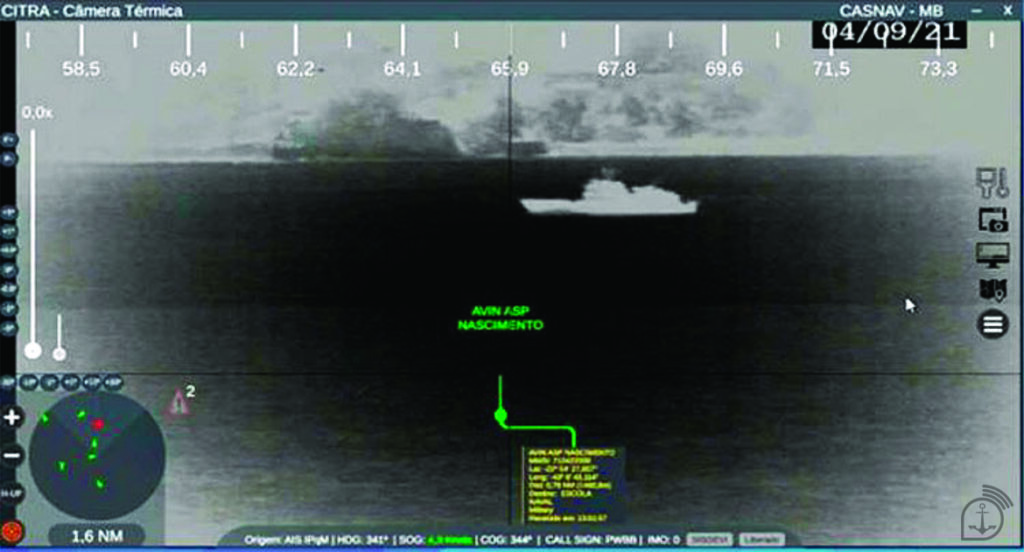System is already operating in the Port of Rio de Janeiro
The Brazilian Navy (MB) has created an augmented reality system to monitor Brazilian ports. The Augmented Reality Tactical Imagery Console (CITRA) makes virtual monitoring, which already takes place in ports, even more effective. Easy to install, CITRA is in operation at the Port of Rio de Janeiro and intends to generate a greater understanding of military and non-military activities in the maritime environment.
The Port of Rio de Janeiro handled 2.4 million tons of cargo in the first quarter of this year, surpassing by 13.5% the volume handled in the same period of 2021. The information is from Companhia Docas do Rio de Janeiro (CDRJ), the Port Authority responsible for managing the port.
CITRA combines real camera images with metadata obtained from a command and control system, captured by sensors such as AIS (Automatic Identification System) and Radar ARPA (Automatic Radar Plotting Aids). From the augmented reality images generated, it is possible to detect various data from a vessel, such as: name, classification, course, speed, flag, and destination.
Corvette Captain of the Technical Staff Leandro Aparecido Simal Moreira, who participated in the development of CITRA, points out other functionalities of the system. “The generation of alert messages, the integration with nautical charts, the automatic tracking of targets of interest, the recording and reconstruction of navigation history, and the integration with other civilian applications, such as the Paperless Port.”
CITRA is integrated to the Pilot Project of the Blue Amazon Management System – SisGAAz and, according to Corveta Captain Moreira, “the console is flexible and can be adopted in other Brazilian states and ports. There are already demands for studies on the feasibility of installing it in other regions of the country, which will expand the virtual monitoring of Brazilian waters.”
The added capabilities will be fundamental to meeting the goals set by the National Defense Strategy, regarding the availability of means capable of exercising surveillance and control of Brazilian jurisdictional waters, also contributing to the maintenance of the safety of maritime navigation and communication lines. “We know of the interest of other countries in acquiring this technology,” adds Moreira.
Another feature of CITRA is to improve the training of students at the Merchant Marine Officer Training School (EFOMM). From the integration of this system with SimPass (Passage Simulators), also developed by the Navy, it is possible to make a presentation of the Maritime Service called Local Port Service (LPS) to the students, which allows a better understanding of the communication and control process between port-ship.
All the development of CITRA was done by the Center for Naval Systems Analysis (CASNAV), a Scientific, Technological, and Innovation institution subordinated to the MB. CASNAV develops solutions in the areas of Information Technology, Operational Research, Simulation, and Cryptology. Moreover, it optimizes the employment of the Force in its constitutional mission and in the exercise of Maritime Authority.
According to the Director of CASNAV, Sea and War Captain Caio Germano Cardoso, besides the maritime operational environment, CASNAV generates knowledge and new products in cooperation with academic institutions and the Defense Industrial Base. “All these aspects contribute to the growth and development of the economy, to the generation of jobs and the production of wealth, providing a better quality of life for society and greater independence in critical technologies for the country.

Agência Marinha de Notícias – Primeiro-Tenente (RM2-T) Laís Dornelas de Araújo Itagyba – Rio de Janeiro, RJ – *** Translated by Defconpress Team
